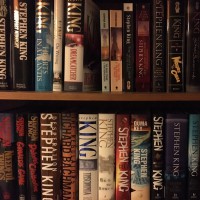The perfect gift to fans of King’s Dark Tower epic, leaving his audacious and frustrating ending intact as the closing point of a tale more than 30 years in the making.
Instead, his latest addition is a story within a story within a story, the middle one set in Roland’s youth (soon after the events described in Wizard and Glass) and the last one starting right after the ka-tet has left the city of Lud. The innermost one is a grim and beautiful fairytale placed in Mid-world. They are, all of them, wonderful. At some 300 pages, this is King at his most condensed, adopting a style unknown to many casual readers.
Taking shelter from a deadly cold storm known as a starkblast, the ka-tet spend the time listening to Roland as he tells the other two stories.
The one wherein he is the main character deals with a murderous shape-shifter out in the countryside, whom Roland and fellow gunslinger Jaimee are sent to hunt down. In passing, almost, we get some more clues about the world that was and the events that were to change it. We hear different attitudes towards the rulers in Gilead and towards Farson, the ‘good man’ who is to lead a rebellion against them.
At its third level, the tale is arguably the most fairy-taleish, with creatures such as the ‘sighe’ which would feel slightly out of place in Roland’s time, some old-fashioned magic and even a dragon. It is, fittingly, a story told by a young Roland to a frightened child to pass the time and ease the horror of a recent tragedy. This titular tale takes up more than half of the book and once you’ve decided that the resolution to the other two can wait a bit, it’s sure to grab your attention. Here as well, a starkblast becomes an important element.
King also takes the opportunity to provide some consoling details to the saddest part of the gunslinger’s long, strange life.
If Sai King should decide to write more such complementary tales about Mid-world, it would be awesome. If not, this little book is still a treasure to be grateful for.
